Is Waterproof Mascara Bad For You?
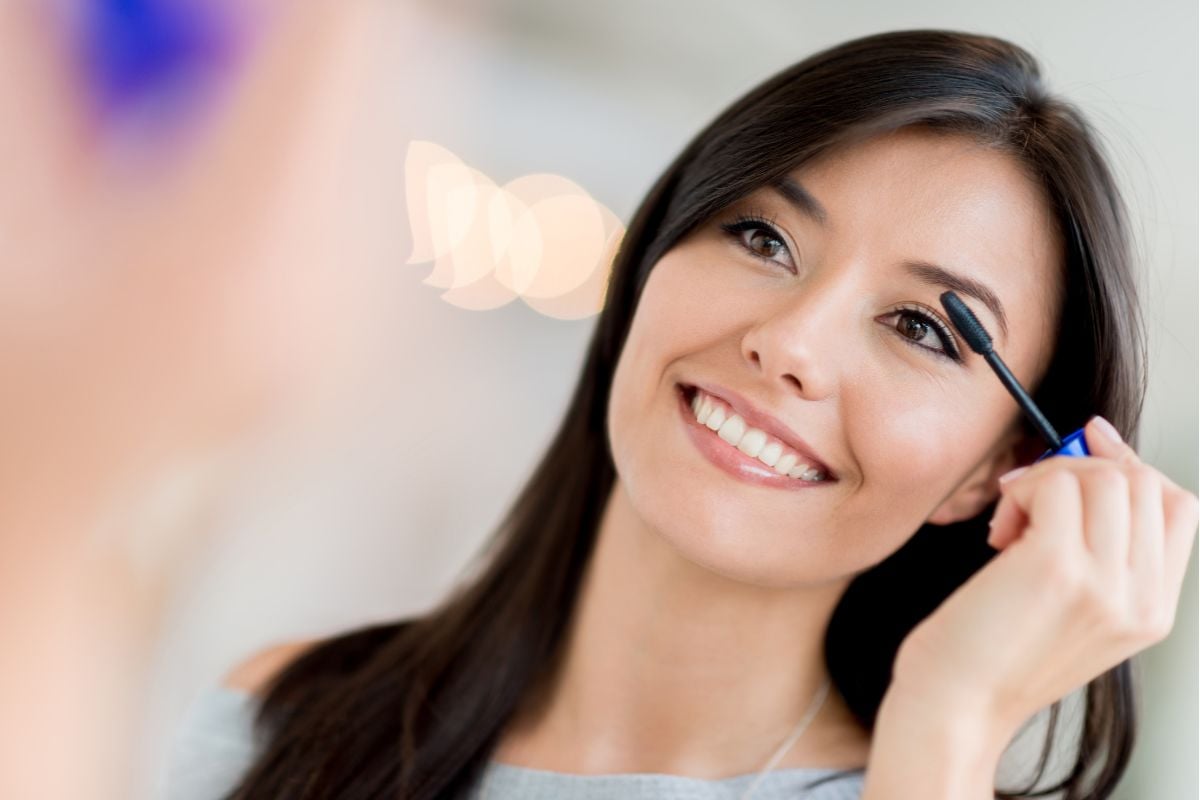
As makeup enthusiasts, we all know the struggle of finding the perfect mascara. Whether it’s lengthening, volumizing or curling, the quest for perfect lashes seems never-ending. But among the myriad of options, one particular type stands out for its ability to defy the elements: waterproof mascara.
Waterproof mascara is preferred over regular mascara for occasions where we need our makeup to stay put, come rain or shine. However, have you ever considered the safety of these incredible formulas? In this blog post, we’re diving deep into the world of waterproof mascaras, exploring what makes them different from other types of mascaras. But more importantly, we’ll address the burning question: Are waterproof mascaras safe to use?
Is Waterproof Mascara Bad For You?
To begin, the safety of waterproof mascara is a topic of debate. While waterproof mascara offers the convenience of long-lasting wear, some concerns have been raised regarding its potential impact on eye health and overall safety.
One of the primary concerns associated with waterproof mascara is its formulation. Namely, waterproof mascaras often contain ingredients that may be harsh on lashes and the delicate skin around the eyes. Furthermore, some individuals may experience allergic reactions or sensitivity to certain ingredients found in waterproof mascara formulations.
Additionally, waterproof mascara can be more difficult to remove compared to regular mascara. For instance, stubborn formulas may require more vigorous rubbing or the use of harsh makeup removers that can irritate the delicate eye area. Moreover, removing waterproof mascara improperly may increase the risk of eyelash loss or damage.
Despite these concerns, it’s essential to note that not all waterproof mascaras are created equal. And some brands offer safer formulations. Understanding how waterproof formulas are built will help you to assess both safety and performance of the product.
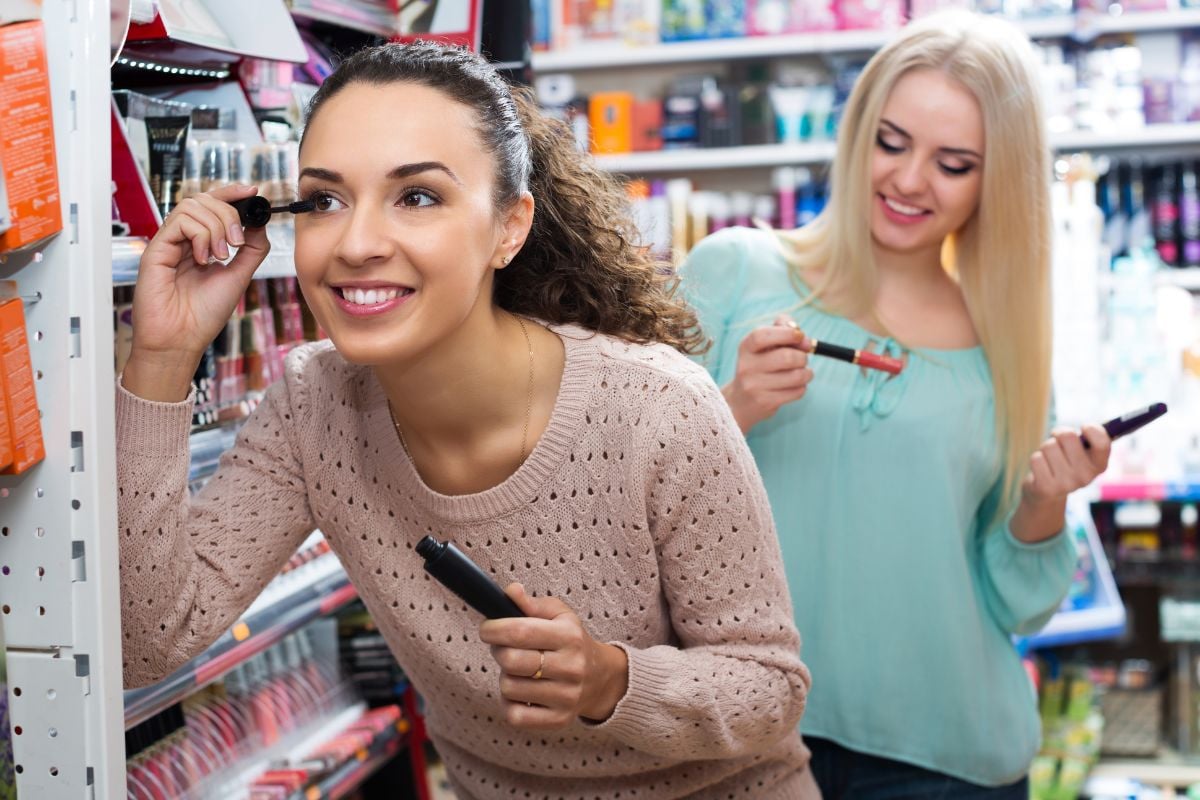
Decoding Waterproof Mascara Ingredients
Ultimately, I know you are interested in what brands offer safer options. To answer this, I conducted extensive research into popular brands. Specifically, from various price points, I found the top-rated waterproof mascaras on the market today and evaluated their ingredient lists. In my opinion, ❌marks ingredients of high-to-medium concern, and ⚠️marks ingredients of low concern in mascaras. Note that the same ingredients can pose a different level of concern in different products.
To illustrate, here are two tables showing some of the criteria we used to categorize each brand of waterproof mascara. Keep reading to learn which categories the researched products fall into and why!
| Category | Reason |
| Best | Mostly no ingredients of concern ⚠️ Non-organic ingredients (e.g., soybean oil) |
| Almost Better | ❌Ethoxylated ingredients (PEGs, Polysorbates, or ingredients ending in -eth) ❌Phenoxyethanol ⚠️Paraffin ⚠️Aminomethyl Propanediol |
| Not a Fan | ❌BHT ❌Carmine ❌Fragrance ❌Parabens ❌Ethoxylated ingredients (PEGs, Polysorbates, ending in -eth) ❌Triethanolamine ❌Cyclopentasiloxane ❌Phenoxyethanol ❌Chlorphenesin ⚠️Butylene/ethylene/styrene copolymer ⚠️Ethylene/propylene/styrene copolymer ⚠️Acrylates Copolymer ⚠️Synthetic Wax ⚠️Polyethylene ⚠️Talc ⚠️Paraffin ⚠️Aminomethyl Propanediol ⚠️Ceresin |
| Waterproof Mascara Ingredient | Safety Concerns |
| ❌Butylated Hydroxytoluene (BHT) | – under assessment as endocrine disrupting (ECHA) – suspected carcinogen (source) |
| ❌Carmine | – a red pigment of animal origin (derived from dactylopius coccus insects, native to South America and Mexico, that live as parasites on cactus plants) – associated with severe allergic reactions (source and source) |
| ❌Fragrance | – undisclosed ingredients – may interfere with the endocrine system, cause allergies, increase the risk of cancer (read Is Natural Fragrance Safe?) |
| ❌Parabens | – preservatives that are potential endocrine disruptors (source) – linked to the death of human meibomian gland epithelial cells essential to maintaining the health and integrity of the ocular surface (source and source) |
| ❌Ethoxylated Ingredients (PEGs, Polysorbates, ending in -eth) | – made with carcinogenic ethylene oxide and may be contaminated with carcinogenic 1,4 dioxane (read more in post about polysorbates) |
| ❌Triethanolamine | – suspected of damaging fertility or the unborn child (ECHA) – a dermal irritant if formulated incorrectly, and should not be used in cosmetic products in which N-nitroso compounds can be formed (source) |
| ❌Cyclopentasiloxane | – potential endocrine disruptor (read The Intriguing Story Of Cyclopentasiloxane) |
| ❌ Phenoxyethanol | – potential allergen – may contain the residue of corrosive phenol and carcinogenic ethylene oxide (read Phenoxyethanol in Skin Care) – linked to the death of human meibomian gland epithelial cells essential to maintaining the health and integrity of the ocular surface (source and source) |
| ❌Chlorphenesin | – linked to the death of human meibomian gland epithelial cells essential to maintaining the health and integrity of the ocular surface (source and source) – potential allergen in rare occasions (source) |
| ⚠️Butylene/ethylene/styrene copolymer ⚠️Ethylene/propylene/styrene copolymer | – no safety data found – styrene, one of the components of these copolymers, is banned in the EU from use in cosmetics |
| ⚠️Ceresin | – petroleum derivative and thus can have contaminants (source) |
| ⚠️Talc | As powder, talc may be contaminated with carcinogenic asbestos and affect human airways (source). While this is not directly applicable to mascara, we cannot deem talc absolutely safe. |
| ⚠️Acrylates Copolymer | – considered a skin-sensitizing agent by the ECHA |
| ⚠️Paraffin | – made from petroleum – banned by EU if it contains more than 0.005% potentially carcinogenic benzo[a]pyrene (source) |
| ⚠️G3004 2 Petroleum Distillates | – made from petroleum – unclear what ingredient it is – a number of different petroleum distillates are banned in the EU from use in cosmetics (source) |
| ⚠️Synthetic Wax | – undisclosed ingredients – likely made from petroleum (see the “Trace Carcinogens” section for more information) |
| ⚠️Polyethylene | – listed by the FDA as one of the ethoxylated substances that can contain the residue of potentially carcinogenic 1,4-dioxane |
| ⚠️Aminomethyl Propanediol | – maximum concentration in mascara is 2%. May contain secondary amines as impurities in finished products that may undergo N-nitrosation (source) |

“Not A Fan” Waterproof Mascaras Options
As you can see, the waterproof mascaras in this category contain many ingredients of concern, both ⚠️ low and ❌high-to-medium.
| Category | Brand of Waterproof Mascara | Ingredient Concerns |
| Not A Fan | COVERGIRL LashBlast Clump Crusher Mascara | ❌Triethanolamine ❌Methylparaben ❌Ethylparaben ❌Sodium Laureth Sulfate ❌Propylparaben ❌Phenoxyethanol ⚠️Acrylates Copolymer ⚠️Synthetic Wax ⚠️Polyethylene ⚠️Excessive preservatives |
| Not A Fan | Maybelline Lash Discovery Mini-Brush Defining & Lengthening Mascara | ❌Methylparaben ❌Butylparaben ❌Ethylparaben ❌Propylparaben ⚠️G3004 2 Petroleum Distillates ⚠️C8-9 Isoparaffin ⚠️Paraffin ⚠️Synthetic Beeswax ⚠️Sodium Polymethacrylate |
| Not A Fan | Lancôme Hypnôse Drama Instant Full Body Volume Waterproof Mascara | ❌Methylparaben ❌Propylparaben ❌PEG-30 ⚠️Talc ⚠️Synthetic Beeswax ⚠️ Paraffin |
| Not a Fan | Neutrogena Hydro Boost Plumping Mascara | ❌Fragrance ❌Phenoxyethanol ❌Chlorphenesin ⚠️Ceresin ⚠️Aminomethyl Propanediol |
| Not a Fan | Innisfree Skinny Waterproof Zerocara | ❌Cyclopentasiloxane ❌Phenoxyethanol |
| Not A Fan | L’Oreal Paris Bambi Eye Lasting Volume Lengthening and Curling Mascara | ❌Steareth-2 ❌Laureth-21 ❌BHT ❌Phenoxyethanol ⚠️Acrylates Copolymer ⚠️Paraffin |
| Not A Fan | Lancôme Monsieur Big Waterproof Mascara | ❌Steareth-20 ❌C12-13 Pareth-23 ❌C12-13 Pareth-3 ❌Sodium Laureth Sulfate ❌Carmine ⚠️Paraffin ⚠️Ethylene/Acrylic Acid Copolymer ⚠️Styrene/Acrylates/Ammonium Methacrylate Copolymer ⚠️Synthetic Beeswax |
| Not A Fan | Too Faced Better Than Sex Volumizing & Lengthening Waterproof Mascara | ❌Cyclopentasiloxane ❌Phenoxyethanol ⚠️Paraffin ⚠️Talc |
“Almost Better” Mascara Options For You
Mainly, these waterproof mascaras are in this category because they have fewer ingredients of high-to-medium concern and of low concern.
These brands were both considered “almost better,” rather than “better” due to the use of ethoxylated ingredients and phenoxyethanol. Note that phenoxyethanol is of higher concern when it is present in mascaras or lip products, in my opinion.
| Category | Brand of Waterproof Mascara | Ingredient Concerns |
| Almost Better | Tarte Maneater Waterproof Volumizing Mascara | ❌Polysorbate 60 ❌Phenoxyethanol ⚠️Aminomethyl Propanediol ⚠️Paraffin |
| Almost Better | Thrive Causemetics Liquid Lash™ Extensions Mascara | ❌Laureth-21 ❌ Phenoxyethanol ⚠️Acrylates Copolymer |

How To Choose The Best Waterproof Mascara
Next, when it comes to the safety of mascara ingredients, there are two primary concerns that consumers and experts alike tend to focus on. First, the safety of ingredients listed on the label, and second, contaminants and toxic byproducts. Today we will discuss this further.
Tip #1 Avoid Typical Toxins
Of course, we want to use the safest and least irritating ingredients possible, especially for cosmetics around our eyes. However, many cosmetic ingredients and preservatives are known for contact dermatitis, redness, itching, sensitization, hormone disruption, and cancer.
In my experience, irritation and allergic reactions are often written off by users as a problem unique to them. Perhaps users think that redness around their eyes is unavoidable, or that irritation is normal. But this should not be the case. I see ingredients on labels that could be irritating to anyone and, in my opinion, you should avoid altogether.
As reviewed in previous sections, some of the common toxins in mascara to watch out for are parabens, ethoxylated ingredients, fragrance/natural fragrance, phenoxyethanol, synthetic waxes/paraffin, acrylates copolymer, and harsh solvents (source). To learn more about harmful chemicals in makeup to avoid, I wrote a comprehensive blog post on chemicals in makeup you won’t want to miss!
Tip #2 Avoid Potentially Contaminated Ingredients
The second concern pertains to the potential for contamination in mascara. Cosmetics, including mascara, can contain trace amounts of impurities or byproducts resulting from the manufacturing process and/or the raw materials used (source).
Regulatory limits do exist for some of these contaminants, however most are not subject to pre-market verification by the FDA (source). In addition, the presence of these contaminants, even in small quantities, is a cause for concern, particularly given the cumulative exposure from multiple cosmetic products used daily. Today we will talk about four areas that are, in my opinion, the most prevalent examples of contamination in makeup.
PFAS
Recently, there has been an increased focus on per- and polyfluoroalkyl substances (PFAS) contamination within cosmetics. PFAS refers to a potentially toxic class of chemicals, that are legal to use, despite their link to a long list of serious health conditions including cancers, and immunotoxicity in children. As you may know, PFAS chemicals have been nicknamed “forever chemicals” because of their persistent nature in our bodies, water sources, and environment (source). Naturally, this means we are finding PFAS in cosmetics, both intentionally and unintentionally added.
Furthermore, a monumental study on PFAS in cosmetics performed in 2021 found that 47 percent of mascaras tested were found to contain high levels of fluorine. Scientists test for fluorine because all PFAS chemicals contain fluorine atoms (source). Notably, one of the scientists said that PFAS in waterproof mascaras was not surprising, given that PFAS are commonly used for their water resistance and film-forming properties (source).
Echoing this perspective, this study found waterproof cosmetics were likely to contain PFAS. All the samples in this study had measurable levels of PFAS. But some of the detected compounds weren’t on the list of ingredients in the products. Researchers speculated that this could result from product aging or contamination from impurities in raw materials (source).
While these studies are steps forward, there is a need for additional research to have a true picture as to which ingredients are the culprits for PFAS contamination. However, all cosmetics, particularly waterproof ones, must undergo PFAS testing.
Heavy Metals
Heavy metals such as lead, arsenic, mercury, and cadmium have been detected in various cosmetics, including mascara (source). These metals may enter cosmetics as contaminants in raw materials or as impurities during manufacturing processes. Chronic exposure to heavy metals has been associated with adverse health effects. You can read more about this problem in my blog posts Are There Heavy Metals In Makeup and Lead in Lipstick. While these metals are natural, you can reduce your exposure to them if you know how to find safe cosmetics – read on to learn how.
How To Avoid Contamination
Mitigating the risk of harmful contaminants in cosmetics will ultimately require a multifaceted approach. It is a good idea for us, customers, to advocate for increased industry accountability, heavier regulatory oversight, and consumer awareness. However, realistically speaking, this is a time-consuming process. I have been contacting companies since 2012 and encouraging my readers to do the same. Hence, I have seen a lot of changes for the better. Yet, there are limitations to this approach.
Even when a company discloses their 3rd-party test report on a specific ingredient or product, it is a test report done on a specific batch. The problem with this approach is that the test results may vary from batch to batch. Furthermore, considering PFAS and heavy metals are present in water, air, and soil, I believe it is unfair to penalize small business owners for not eliminating PFAS and heavy metal contamination completely. It is very costly to test every ingredient and every batch. I think some of the burden of 3rd-party testing should be placed on the ingredient suppliers.
Therefore, my suggestion is to buy from companies that have proven to be trustworthy. Thus, while I look at ingredient lists, I also look for subtle clues as to the maker’s integrity. How do they disclose ingredients? How do they describe their products and ingredients? Do they make unrealistic claims? How do they communicate with their customers? All of that matters, in my opinion.

“Best” Waterproof Mascara Option
With that said, I did not want to leave you without a safer option for waterproof mascara. Currently, I believe the safest waterproof mascara on the market is Ere Perez Avocado Waterproof Mascara. I wish they used organic versions of the oils though, especially soybean oil.
| Category | Waterproof Mascara Brand | Concerning Ingredients |
| Best | Ere Perez Avocado Waterproof Mascara | – non-organic oils (e.g., soybean oil) |
This mascara does not contain water and therefore can avoid using preservatives. Predominantly, it contains natural ingredients, like carnauba wax, soybean seed oil, and palm kernel wax along with a variety of other oils. For the film-forming agent, it uses capryloyl glycerin/sebacic acid copolymer that does not carry notable toxicity concerns.
Ere Perez Avocado Waterproof Mascara provides more of a natural look, but it is described as “buildable.” This mascara has been sold for years and, generally, has positive reviews. The brand describes the formula as “wet,” so tilting the wand when removing it from the tube can help squeeze off excess formula and make application easier. If you try it, I would love to hear your thoughts!
Please remember that it is important to remove mascara gently, without pulling the eyelashes. For the best results, I recommend using oil-based makeup remover as opposed to a water-based solution. The safest one I’ve found is the Crunchi I AM The Balm™ Makeup Cleansing Balm (use the ADVOCATE10 code for 10% off on $50+ orders).
Summary Of “Is Waterproof Mascara Bad For You?” Post
Most Waterproof Mascaras Carry Many Concerns About Their Ingredients, Both On And Off The Label.
In conclusion, while waterproof mascara can, undoubtedly, be a valuable tool in our beauty arsenal, it’s essential to approach its use with caution and awareness of the potential ingredient considerations. Conventional waterproof mascaras can be difficult to remove and often contain potentially harmful ingredients. Including irritants, sensitizers, harmful preservatives, and endocrine disruptors.
Moreover, the presence of contaminants, such as PFAS and heavy metals, further underscores the need for vigilance when selecting cosmetics. At present, the only waterproof mascara I am okay with is Ere Perez Avocado Waterproof Mascara.
Furthermore, removing waterproof mascara can damage the eyelashes. Perhaps opting for water-resistant mascara is a healthier choice.
I encourage you to read ingredient lists and consider avoiding mascaras with ingredients of concern next time you buy this product. As always, on the I Read Labels For You blog, I strive to leave you with more resources to continue your non-toxic journey. Please visit my recommendations for makeup and other non-toxic products that I have personally reviewed for ingredient safety. And feel free to book a consultation with me should you need support in your healthy living journey.
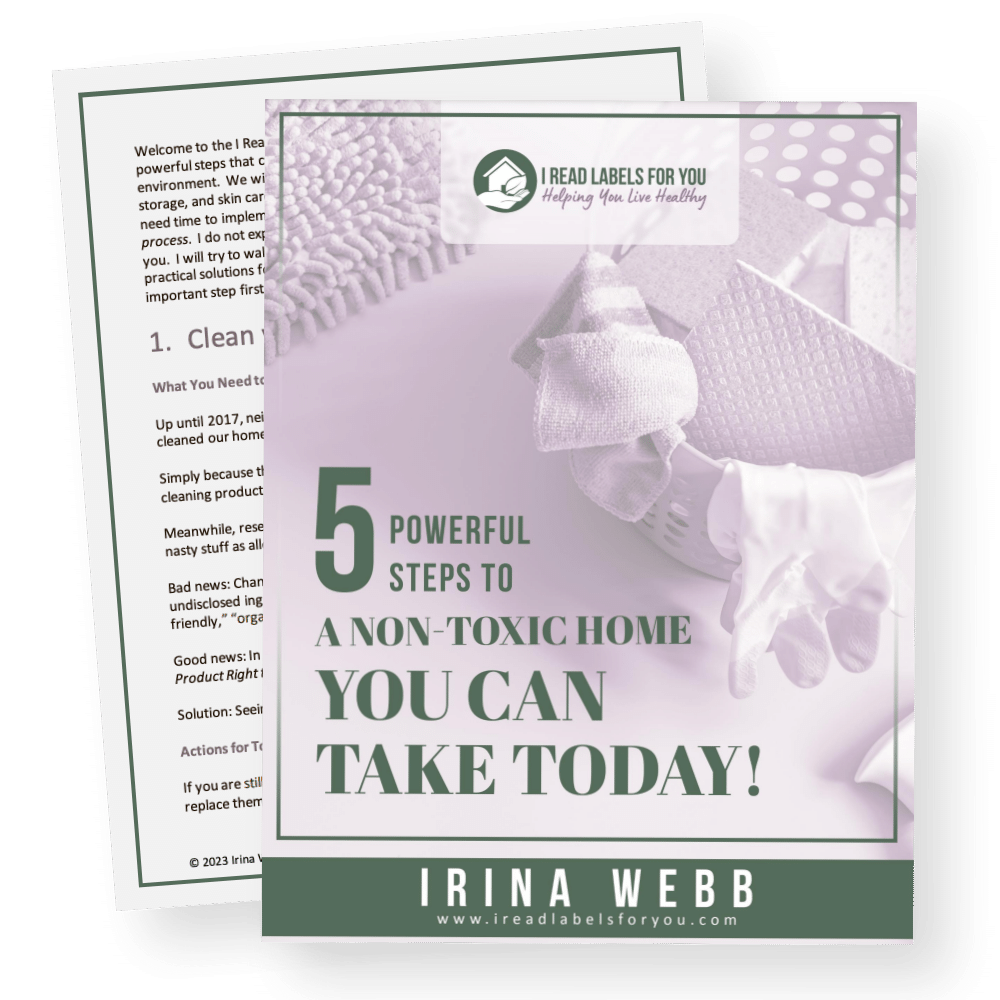
Download The Free Guide!
5 Powerful Steps To A Non-Toxic Home
Join our informed consumer community and get our free guide the “5 Powerful Steps To A Non-Toxic Home”.

 Written by
Written by 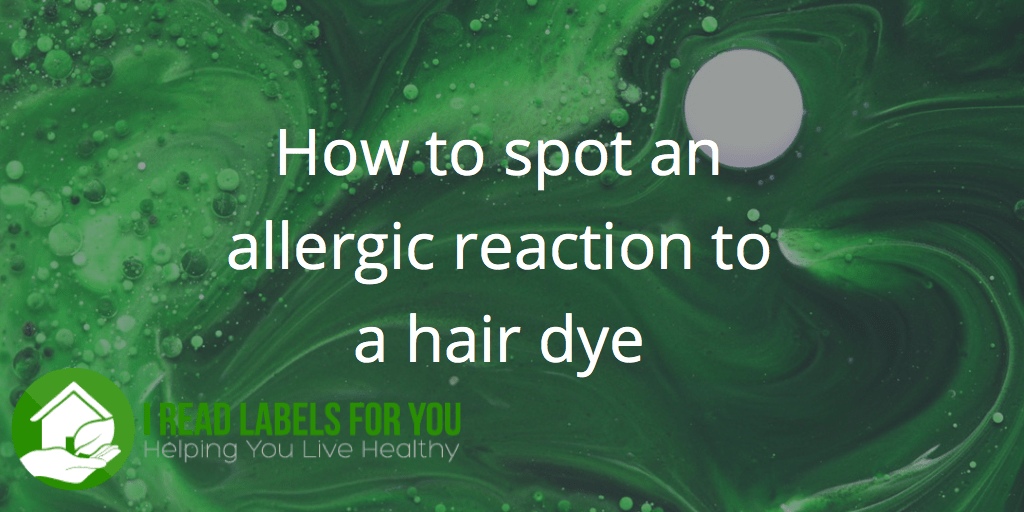
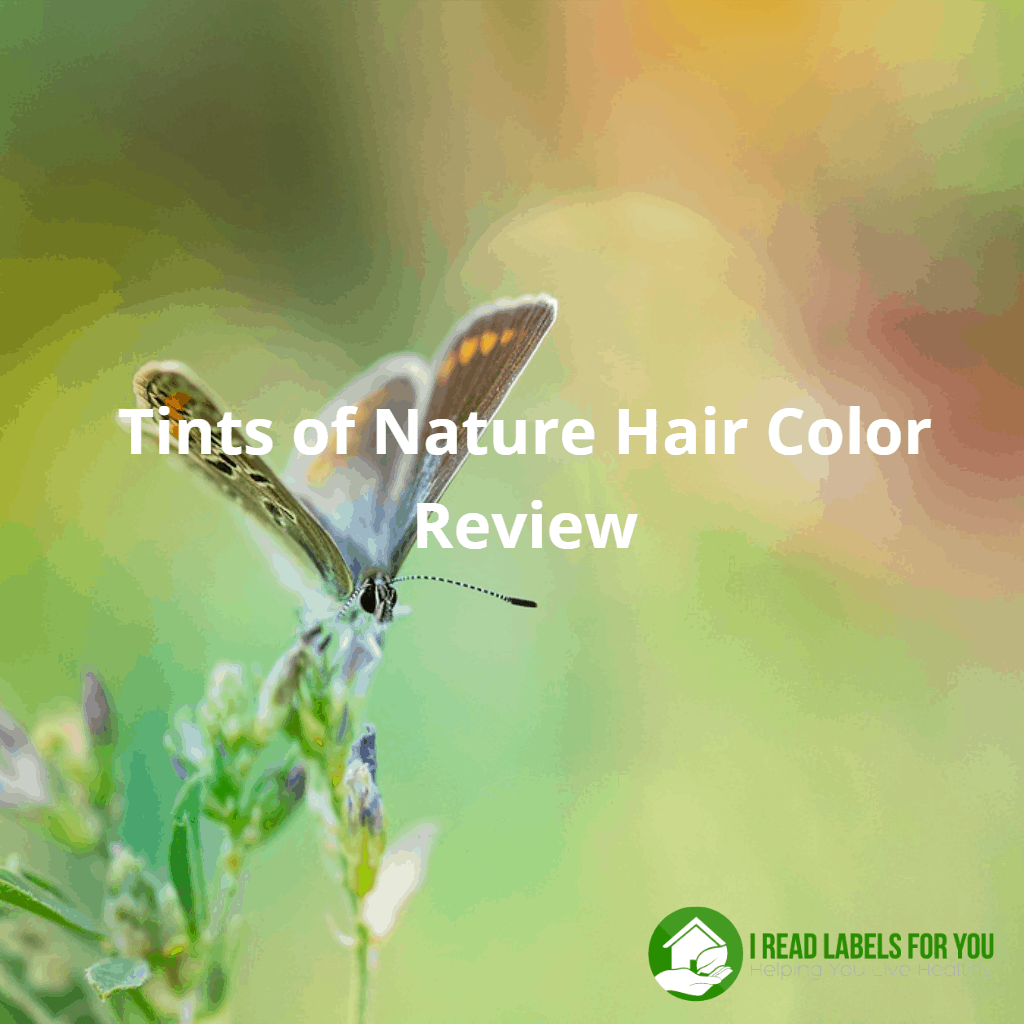
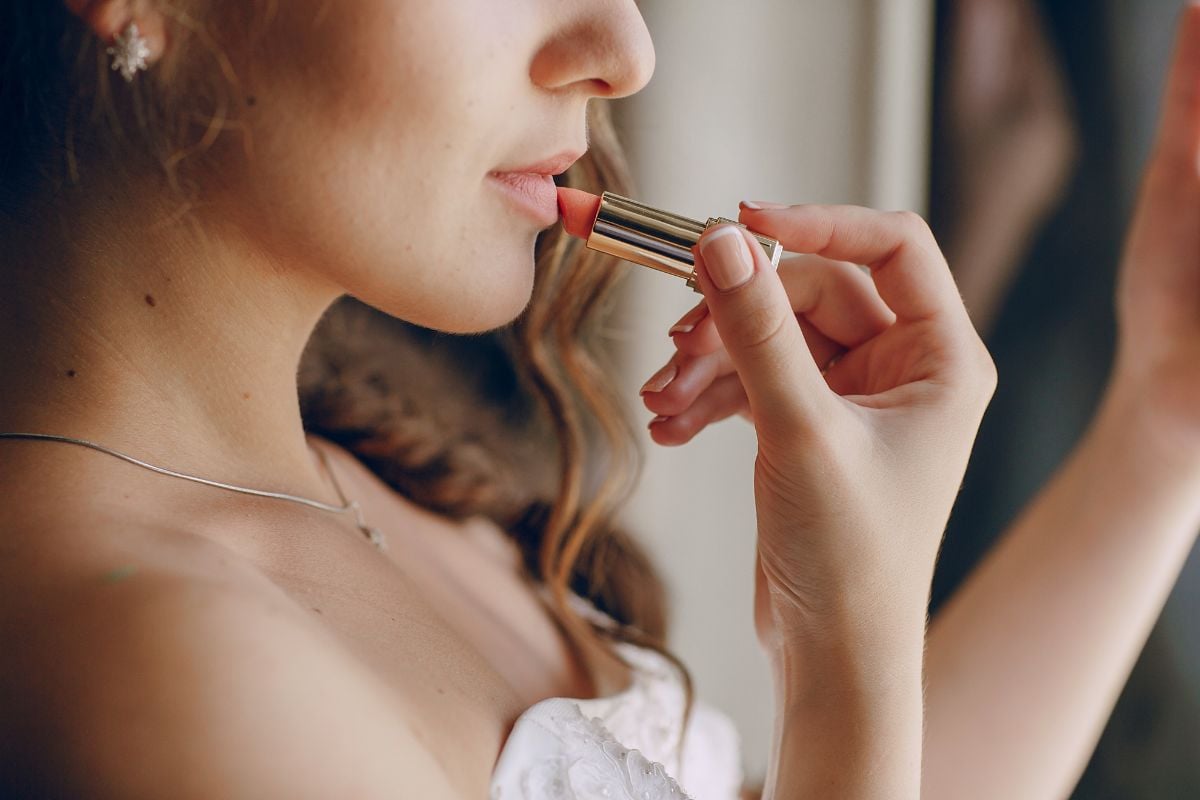
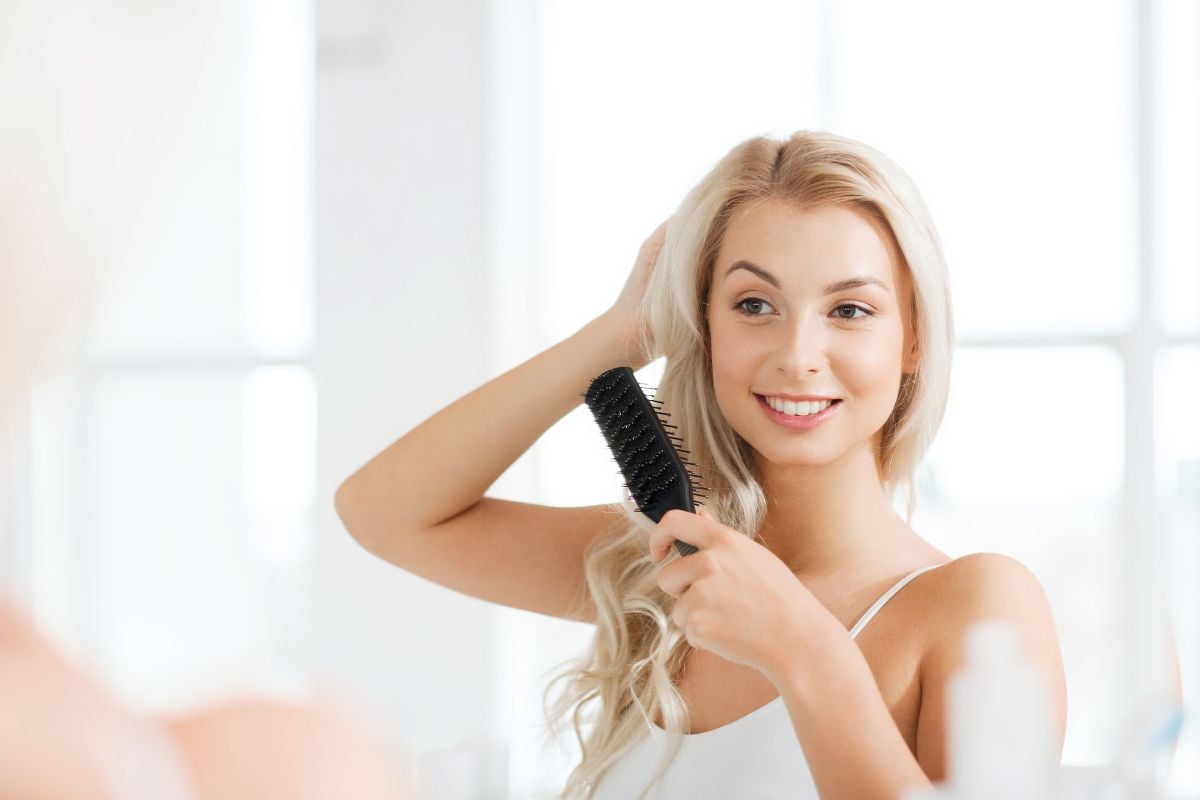
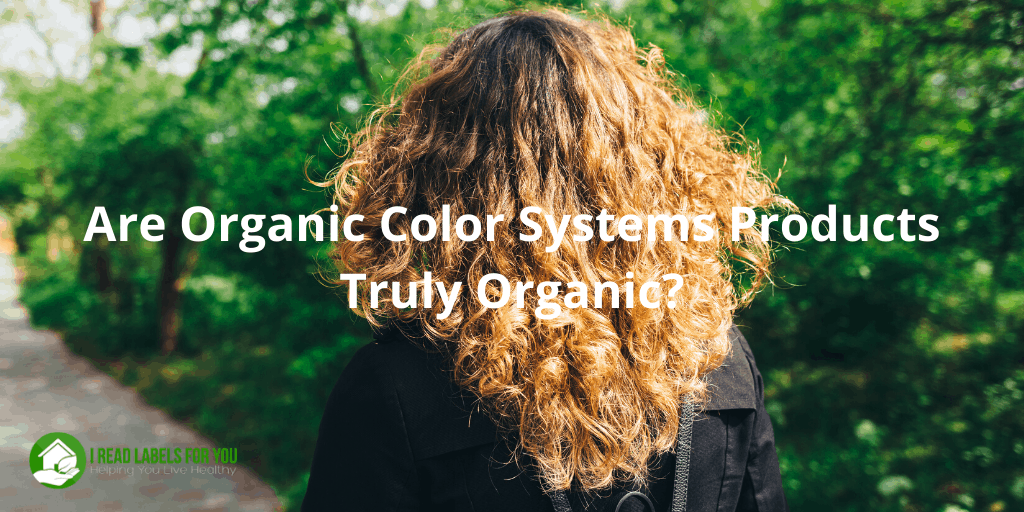
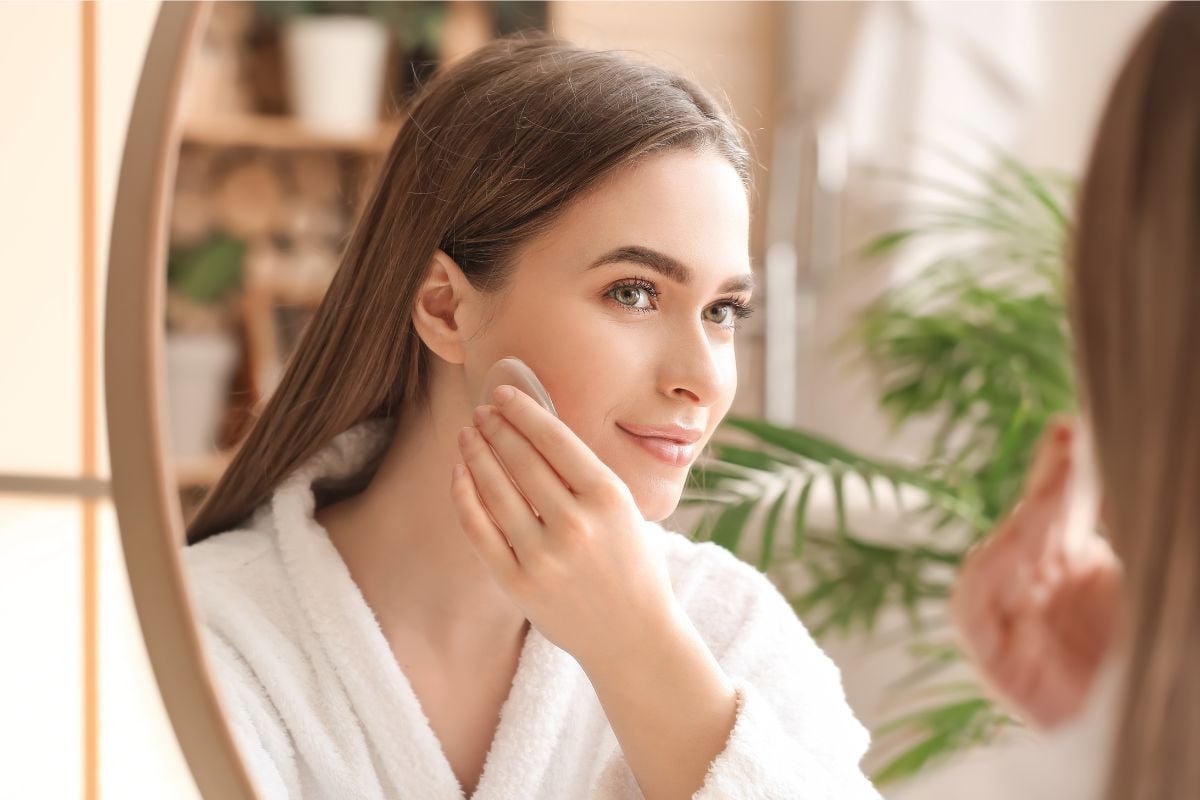
Before commenting, please read our Comment Policy.